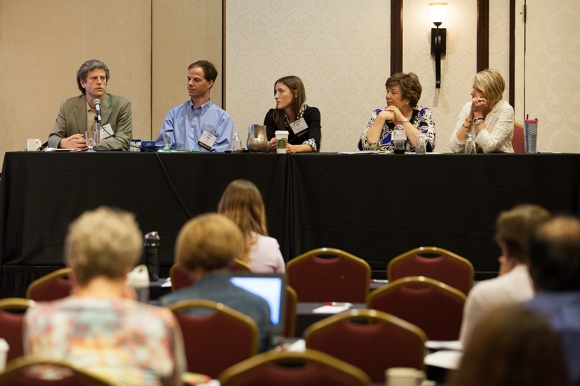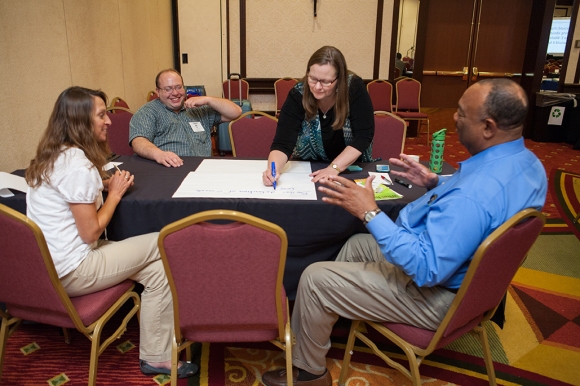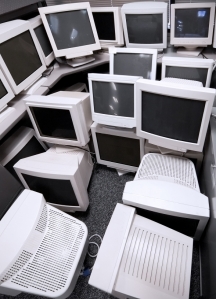By Scott Cassel, Chief Executive Officer and Founder, Product Stewardship Institute
 Best Buy’s recent announcement that it will start charging $25 to recycle each TV and computer monitor indicates that the already stressed U.S. electronics collection infrastructure has gotten worse.
Best Buy’s recent announcement that it will start charging $25 to recycle each TV and computer monitor indicates that the already stressed U.S. electronics collection infrastructure has gotten worse.
We can hardly blame Best Buy or any other collector that stepped up to make recycling easier for consumers. Back in 2004, when not a single retailer was collecting electronics equipment, the Product Stewardship Institute (PSI) teamed with Staples and the U.S. Environmental Protection Agency to start the first computer take-back program in the country. Five years later, motivated by state extended producer responsibility (EPR) laws, Best Buy took Staples’ computer-only program a big step further to collect both computers and TVs, becoming one of the most convenient locations for consumers to return their used electronic equipment nationwide.
But times have changed. Costs increased, electronics recycling programs became more robust, and vast quantities of higher cost e-scrap are now being collected – changes that have revealed a lack of commitment from most electronics manufacturers to assume responsibility for collecting and recycling used electronics.
With its recent announcement, Best Buy stated that it “should not be the sole e-cycling provider in any given area, nor should we assume the entire cost.” To be sure, some manufacturers did voluntarily step up to fill the infrastructure void over the past decade. In 2004, Dell, in partnership with Goodwill, and HP announced free nationwide electronics take-back programs. Samsung and LG followed suit in 2008. Unfortunately, these programs were limited, leaving Best Buy’s program to cover the brunt of the cost.
Isn’t it ironic? For the past 15 years, collectively, we successfully educated our citizens about the dangers of mismanaging electronics – about youth using acids to burn off toxic metals in countries without adequate environmental and health protection; about the millions of tons of resources that are buried or burned when not recycled, and which must be mined again, creating double the environmental impact; about the lost recycling jobs that are desperately needed by working families; and about the hundreds of millions of dollars that taxpayers and governments must pay to manage the waste from a multi-billion dollar industry.
We all thought we were on the right track, with EPR laws passed in half the U.S. states, some passed with manufacturer support. Resources were conserved, jobs created, and money saved. The public truly caught on – and genuinely appreciated our programs.
But those darn markets had to spoil everything. Well-meaning citizens who today know to “do the right thing” are now effectively being told by manufacturers that they don’t really want them to recycle so much after all. The message the manufacturers convey is that recycling is good, but it should slow down. Or someone else needs to pay for it.
Recyclers, local governments, and a few retailers are doing their part to collect and divert massive quantities of valuable commodities from disposal. But many manufacturers are no longer willing to cover the costs associated with the proper management of their products at end of life. Recyclers must choose between losing money indefinitely, significantly cutting costs, or going out of business. Local governments, whose residents rely on them for trash and recycling services, are now faced with increased electronics recycling costs – costs they didn’t budget for. Before, government officials directed residents to Best Buy as a convenient alternative to recycle electronics. What will they tell their residents now?
Best Buy stands out for its importance in the electronics collection infrastructure in the US. They collect more than any other manufacturer-sponsored program, providing a convenience to consumers unsurpassed by other locations. Even in states with EPR laws, which were intended to hold all brand owners responsible for recycling the electronics they produce, Best Buy has borne more than its fair share of recycling costs, consistently collecting far more material than was required. For example, in 2014, Best Buy recycled more than three times the amount of e-scrap it was obligated to collect in Illinois; more than 4 times its obligation in Wisconsin; and in Minnesota, company officials report that they collect one-quarter to one-third of all electronics recycled in the state – well beyond its market share.
One thing is clear – it’s time to revisit the nation’s 25 state e-scrap laws to ensure that all manufacturers are equally responsible for electronics recycling. PSI and our state and local government members understand the complexities and variations in programs nationally, and are working to find fair solutions for all. Since the first electronics recycling law passed in 2004, the dialogue has drifted away from manufacturers taking full responsibility and internalizing the costs of end-of-life materials management. Instead, arguments revolve around how high targets should be, how much manufacturers should pay, and what products they should cover. Past voluntary and legislatively supported commitments made by manufacturers have eroded. They resist attempts to incorporate recycling costs into product price, and instead want to pass these costs on to someone else.
Best Buy’s original program is what we need more of in the US – national, no cost, hassle-free product take-back. Their industry colleagues need to match that commitment; Best Buy can no longer be expected to go it alone.
To PSI, Best Buy’s move represents a call to action. Let’s work to improve these programs so they support responsible actors like Best Buy, raise expectations of other manufacturers, and meet increasing demand for consumer electronics recycling.
Learn more about PSI’s electronics work by visiting our website. Please feel free to contact Waneta Trabert, PSI’s electronics lead, with comments and questions (617-236-4866).







 In the first decade of this century, electronics recycling was a hot topic in the waste and recycling world. It was dubbed the fastest growing portion of the waste stream by US EPA, and its toxicity brought concerns from advocates for environmental health, among others. Horrifying
In the first decade of this century, electronics recycling was a hot topic in the waste and recycling world. It was dubbed the fastest growing portion of the waste stream by US EPA, and its toxicity brought concerns from advocates for environmental health, among others. Horrifying  For the 11th year in a row, Massachusetts has failed to pass
For the 11th year in a row, Massachusetts has failed to pass